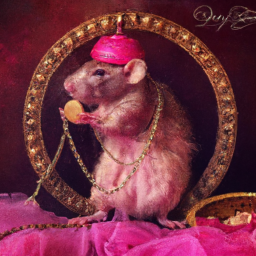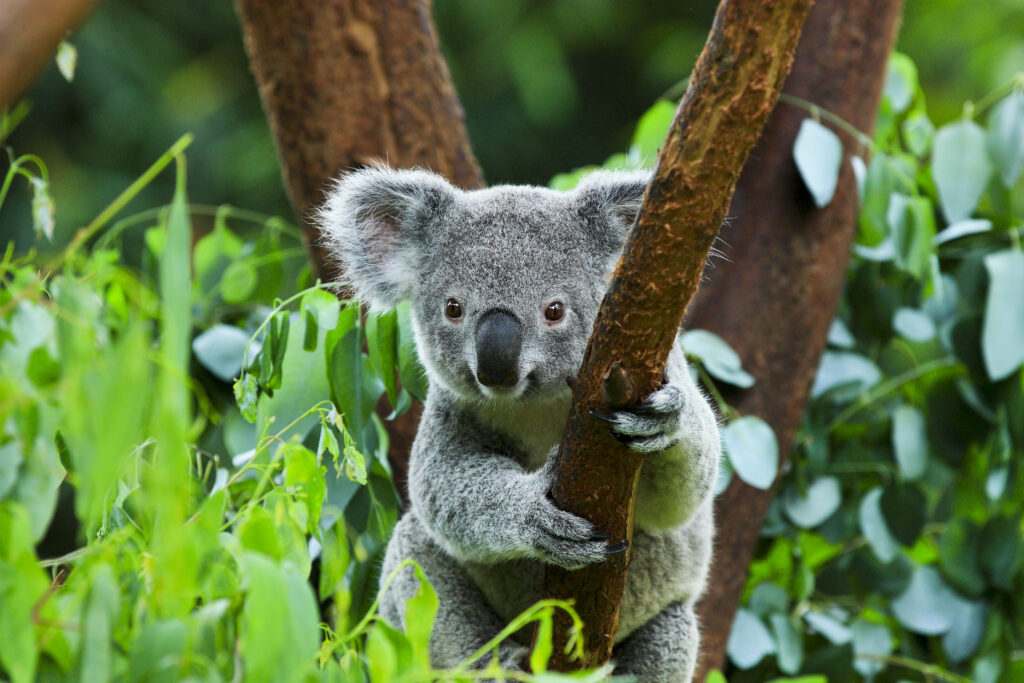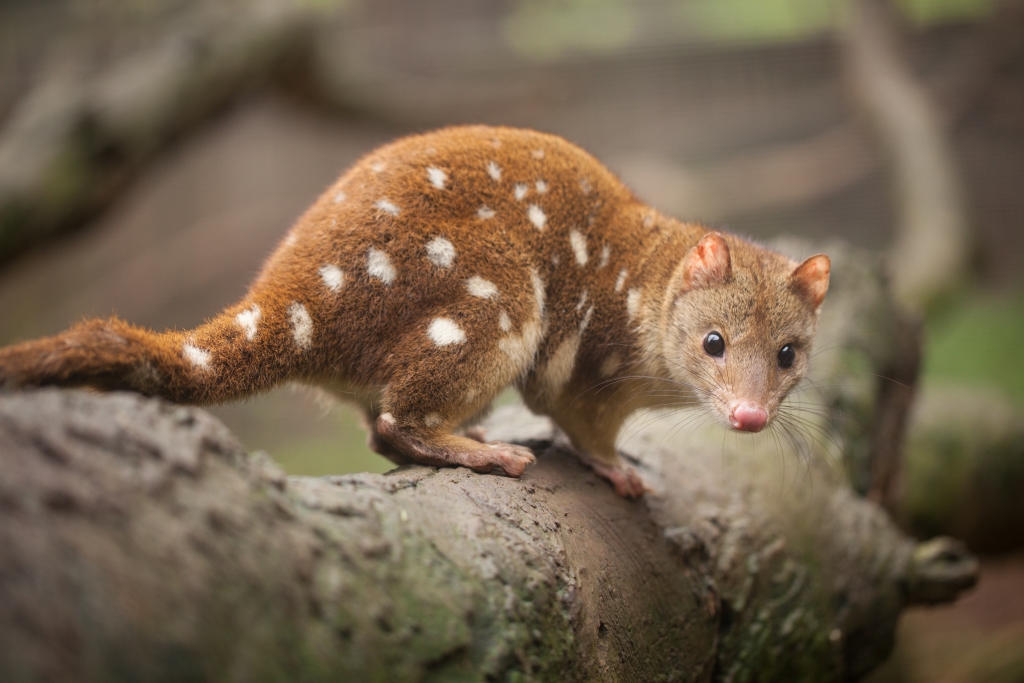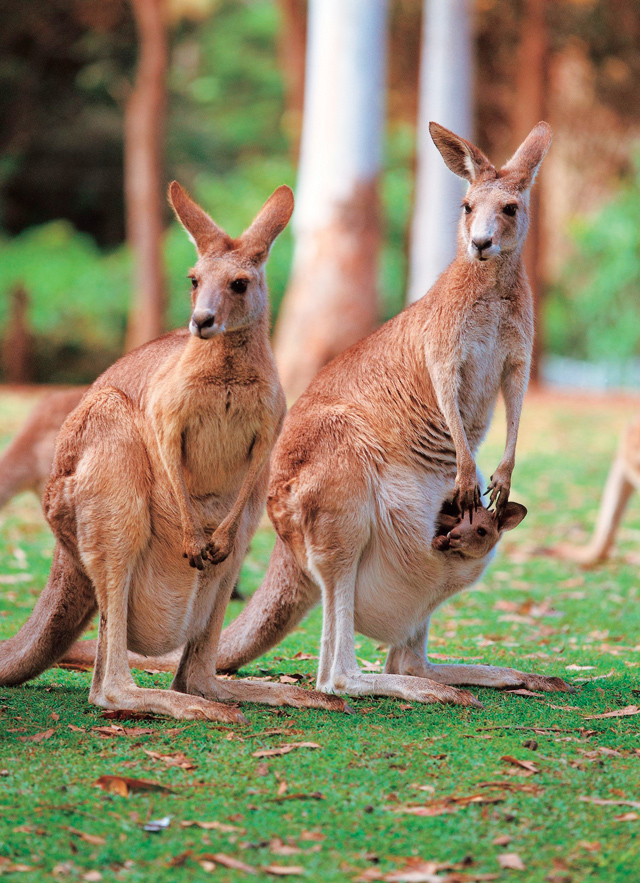
So you’ve always been fascinated by the unique and exotic wildlife that Australia has to offer? Well, get ready to embark on an incredible journey with the “Cool Animals In Australia” collection. This captivating product takes you on a virtual tour of the diverse animal kingdom Down Under, showcasing the incredible biodiversity and beauty of Australia’s native creatures. From cuddly koalas to mesmerizing marine life, this collection is your passport to discovering the coolest animals that call Australia home. Get ready to immerse yourself in the wonders of the land Down Under and let your love for animals soar to new heights.
The Kangaroo
What is a Kangaroo?
Kangaroos are iconic Australian animals known for their powerful hind legs, large feet, and distinctive hopping movement. They are marsupials, which means that females have a pouch where they carry and nurture their young. Kangaroos are herbivorous, feeding mainly on grasses and other vegetation. They are also known for their strong tails that help them maintain balance while hopping.
Different Types of Kangaroos
There are several species of kangaroos found in Australia, with the most well-known being the Red Kangaroo, Eastern Grey Kangaroo, and Western Grey Kangaroo. The Red Kangaroo is the largest marsupial in the world, reaching heights of up to six feet and weighing around 200 pounds. Eastern Grey Kangaroos are slightly smaller but still impressive in size, while the Western Grey Kangaroos are known for their social behavior and large groups called mobs.
Habitat and Living Conditions
Kangaroos are naturally adapted to living in a variety of habitats, including woodlands, grasslands, and scrublands. They are highly adaptable animals and can survive in both hot and cold regions of Australia. Kangaroos are known for their excellent ability to conserve water and survive in arid conditions by extracting moisture from the vegetation they consume.
Unique Features and Mannerisms
One of the most fascinating features of kangaroos is their incredible jumping ability. They can cover large distances in a single leap, reaching speeds of up to 40 miles per hour. Kangaroos also have strong tails that act as a powerful fifth limb, providing balance and support during hopping. They use their tails as a counterbalance while jumping or standing on their hind legs to kick predators.
Kangaroos have a unique social structure. Males, called bucks, engage in fierce boxing matches using their front paws to establish dominance and win over mates. Females, known as does, have a hierarchical social structure, where the dominant female leads the group. Kangaroos also exhibit a behavior called “joey parking,” where the female can pause the development of her embryo until more favorable environmental conditions occur.
The Koala
Understanding the Koala
Koalas are adorable marsupials native to Australia, renowned for their cuddly appearance and affinity for eucalyptus trees. Despite their resemblance to bears, they are not at all related. Koalas are primarily arboreal, spending most of their time in eucalyptus trees where they feed, sleep, and raise their young. They have specialized adaptations, such as sharp claws and a strong grip, that allow them to climb and hold onto branches with ease.
Diet and Behavior
Eucalyptus leaves make up the majority of a koala’s diet, providing them with the necessary nutrients and hydration. These leaves are low in nutrients and challenge their digestive systems, causing koalas to sleep for up to 20 hours a day to conserve energy. Koalas are generally solitary animals, marking their territories with scent glands located on their chests.
Challenges Faced by Koalas
Koalas are currently facing several challenges, including habitat loss due to deforestation and urbanization. As eucalyptus trees are cleared for agriculture and development, koalas lose both their homes and their main food source. They are also susceptible to diseases, such as chlamydia, which can lead to blindness and reproductive problems.
Conservation Efforts
Due to the declining population of koalas, various conservation efforts have been implemented to protect and restore their habitats. These efforts include the establishment of koala sanctuaries, reforestation projects, and the development of wildlife corridors to connect fragmented habitats. Additionally, research and education programs aim to raise awareness about the importance of preserving koala populations.

This image is property of a.storyblok.com.
The Dingo
The Dingo as a Wild Dog
The dingo is a wild dog species found in Australia, believed to have originated from domestic dogs brought by humans over 4,000 years ago. Dingoes have a lean and agile body, well-suited for hunting and surviving in the harsh Australian landscape. They are known for their striking yellowish-red coat, pointed ears, and bushy tail.
Ecological Role and Impact
Dingoes play a crucial ecological role as top predators in the Australian ecosystem. They help control populations of introduced species, such as rabbits and feral cats, that threaten native wildlife. However, their presence and hunting habits have also raised concerns about the impact on livestock, leading to conflicts with farmers.
Conflict with Humans
The presence of dingoes in rural areas has led to conflicts with humans, particularly farmers who rear livestock. Dingoes are known to occasionally prey on sheep and cattle, leading to economic losses for farmers. As a result, controversial methods of dingo control, such as trapping and baiting, have been employed in certain areas to protect livestock.
Preservation Status
The dingo is not currently listed as an endangered species. However, maintaining a healthy dingo population while minimizing conflicts with humans remains a complex challenge. Efforts are underway to better understand and manage dingo populations to ensure their long-term survival in their natural habitats.
The Platypus
Introduction to the Platypus
The platypus is a unique and fascinating creature endemic to Australia. It is one of only a few species of mammals that lay eggs, known as monotremes. The platypus has a duck-like bill, webbed feet, and a beaver-like tail, making it a truly bizarre-looking animal. Its body is covered in waterproof fur, allowing it to thrive in aquatic environments.
Unique Adaptations and Abilities
The platypus is well-adapted to its semi-aquatic lifestyle, spending much of its time in rivers, streams, and lakes. Its webbed feet and flattened tail enable efficient swimming and diving, while its bill is highly sensitive and equipped with electroreceptors that detect the electrical impulses of prey, even in muddy water. The platypus is primarily nocturnal, hunting for small invertebrates, such as insects, worms, and crustaceans.
Role in Ecosystems
Platypuses are considered important indicators of ecosystem health, serving as an indicator species for the aquatic environments they inhabit. Their presence or absence can provide valuable insight into the overall health and functioning of aquatic ecosystems. They also contribute to nutrient cycling by consuming invertebrates and their sensitivity to pollution makes them a valuable bioindicator.
Threats and Conservation Status
Platypuses face various threats to their survival, including habitat degradation, pollution, and climate change. Increasing land-use practices, such as dam construction and water extraction, can disturb their habitats and limit their access to food sources. Efforts are being made to protect and manage platypus habitats, monitor their populations, and raise awareness about the importance of preserving their unique presence in Australian ecosystems.

This image is property of good-nature-blog-uploads.s3.amazonaws.com.
The Tasmanian Devil
Profile of the Tasmanian Devil
The Tasmanian Devil is a carnivorous marsupial found only in the wilds of Tasmania, Australia’s island state. They have a stocky build with powerful jaws capable of delivering a strong bite. Despite their small size, they emit an eerie scream and growl, earning them their intimidating name. Tasmanian Devils are mainly solitary animals, but they come together during feeding and mating periods.
Feeding Habits and Behavior
Tasmanian Devils are scavengers and opportunistic hunters, feeding on a wide range of prey, including carrion, small mammals, birds, and reptiles. They have strong jaws and teeth, allowing them to consume bone and fur, giving them a reputation as voracious eaters. They are also known for their fierce and competitive feeding behavior, which includes loud vocalizations and aggressive displays to deter potential food rivals.
Threat of Devil Facial Tumor Disease
One of the most significant threats facing Tasmanian Devils is the Devil Facial Tumor Disease (DFTD), a contagious cancer that has decimated populations since its discovery in the 1990s. The disease is transmitted through bites during mating or aggressive interactions, resulting in facial tumors that eventually hinder feeding and cause death. DFTD has led to a significant decline in Tasmanian Devil populations, placing them on the endangered species list.
Devils at Risk and Protection Initiatives
To combat the devastating impact of DFTD, extensive efforts have been made to protect and manage Tasmanian Devil populations. Conservation programs focus on captive breeding, disease monitoring, and research into potential treatments or vaccines. Captive populations act as insurance populations for future reintroductions and serve as platforms for public education to raise awareness about the unique challenges faced by Tasmanian Devils.
The Wombat
Basic Facts about Wombats
Wombats are stout, burrowing marsupials found in various regions of Australia. They have a chunky body and short legs, making them experts in digging intricate burrow systems. Wombats are herbivores, primarily feeding on grasses, roots, and bark. They are known for their unique backward-facing pouches, which prevent dirt from entering their pouches while digging.
Lifestyle and Diet
Wombats are predominantly nocturnal animals, spending most of their time underground in their burrows during the day. They are social animals and can live in groups known as colonies. Wombats possess strong teeth and jaws that allow them to chew through tough vegetation, including the bark of trees. This specialized diet helps them meet their nutritional needs in the arid environments they inhabit.
Survival Techniques and Predation
To defend themselves from predators, wombats have developed several survival techniques. When threatened, wombats seek refuge in their underground burrows, making it difficult for predators to reach them. Wombats can also use their powerful limbs to deliver powerful kicks, which can deter predators such as dingoes and Tasmanian Devils. Their tough, armored rear end provides added protection against attacks.
Current Threats and Conservation Plans
While wombats are not endangered, they do face threats from habitat loss, road accidents, and climate change. As urbanization and land development expand, the natural habitats of wombats are compromised, leading to increased human-wombat conflicts. Conservation efforts aim to protect and restore vital wombat habitats, raise awareness about reducing road accidents involving wombats, and develop sustainable land-use practices that consider the needs of these unique marsupials.

This image is property of a.storyblok.com.
The Echidna
What is an Echidna?
The echidna, also known as the spiny anteater, is a distinctive Australian mammal characterized by its spines and ability to lay eggs. Echidnas are one of only two monotremes in the world, along with the platypus. They have a compact body covered in spiky hair and a long snout filled with a sticky tongue used to catch ants and termites, their main food source.
Feeding and Breeding Patterns
Echidnas are insectivorous, feeding primarily on ants, termites, and other small invertebrates. They use their strong front claws to break open insect nests and ant mounds, before quickly capturing their prey with their long tongue. Echidnas have a unique reproductive process where the female lays a single egg, which is then incubated in a pouch for about ten days. After hatching, the young echidna, known as a puggle, is carried in a pouch for several months.
Defense Mechanisms
Echidnas have several defense mechanisms to protect themselves from predators. When threatened, they can dig themselves into the ground, leaving only their spiky backs exposed. Their sharp spines act as a deterrent against predators, while their ability to curl into a ball provides further protection. Echidnas are also skilled at detecting vibrations and can quickly retreat into a safe hiding place.
Condition in the Wild
Echidnas are currently not considered endangered. However, they are susceptible to habitat loss, vehicle collisions, and predation by introduced species, such as foxes and cats. Maintaining healthy populations of echidnas is crucial for Australia’s ecosystems, as they play an important role in controlling insect populations and contributing to soil health.
The Kookaburra
Describing a Kookaburra
Kookaburras are iconic Australian birds known for their distinctive call, which sounds similar to human laughter. They belong to the kingfisher family and are known for their striking appearance, with a large head, strong beak, and brown or blue feathers. Kookaburras are adaptable birds, found in a variety of habitats across Australia, from forests to urban areas.
Diet and Hunting Tendencies
Kookaburras are carnivorous birds, feeding primarily on small vertebrates such as snakes, lizards, insects, and even small mammals. They are known for their unique hunting technique called “gaping.” By perching on a high branch or wire, kookaburras can scan their surroundings for prey. Once they spot their target, they dive down with precision, seizing the prey with their strong beaks.
Significance in Australian Culture
Kookaburras hold great cultural significance in Australia, often featured in Aboriginal Dreamtime stories and represented in Indigenous artwork. The distinctive call of the kookaburra is synonymous with the Australian outback and is a source of inspiration for poets, musicians, and filmmakers. Their presence in urban areas also brings joy to many Australians, as they are known for their friendly and approachable nature.
Impacts of Urbanization
As urbanization continues to encroach upon natural habitats, kookaburras have adapted to living in suburban and urban areas. While this adaptation allows them to survive, it also exposes them to new challenges, such as increased interactions with humans and potential for injury due to collisions with buildings and vehicles. Educating the public about the importance of preserving kookaburra habitats and minimizing human impact is crucial to their long-term survival.

This image is property of www.aboutaustralia.com.
The Quokka
Who are the Quokkas?
Quokkas are small, wallaby-like marsupials that are endemic to Western Australia and can be found on Rottnest Island, near Perth. They have a friendly and charismatic appearance, often described as the “happiest animals in the world” due to their seemingly permanent smile. Quokkas are herbivores, feeding on leaves, grasses, and plants.
Habits and Habitat
Quokkas are predominantly nocturnal and spend their days sheltered in vegetation or hollow logs. They are excellent climbers, using their strong arms and sharp claws to navigate their natural habitat. Quokkas prefer dense forests, woodland areas, and scrublands, but they have also adapted to human-modified environments.
Interaction with Humans
Quokkas have gained international recognition for their photogenic smiles and friendly demeanor. Their curiosity and lack of fear around humans have made them popular subjects for selfies, but it is important to remember that they are wild animals and should not be approached or fed. Strict laws and regulations are in place to protect these unique creatures and ensure their well-being.
‘Happiest Animal in the World’ Tag and Tourism Impact
The tag of being the “happiest animal in the world” has led to an increase in tourism to Rottnest Island, where the majority of quokkas are found. While tourism can bring economic benefits to the local community, it also poses challenges to quokka conservation. Strict guidelines are in place to ensure tourists do not disturb the natural behaviors of quokkas and damage their habitats.
Australian Animal Conservation
Current State of Wildlife in Australia
Australia is home to a diverse range of flora and fauna, with a significant proportion found nowhere else in the world. However, numerous threats have put many of these species at risk. Habitat loss, climate change, invasive species, pollution, and human activities have all contributed to declining populations of native Australian animals.
Main Threats to Australian Animals
Habitat loss and fragmentation remain the primary threats to Australian wildlife. Deforestation, urbanization, and land clearing for agriculture have destroyed and fragmented critical habitats, making it difficult for many species to survive and reproduce. Climate change exacerbates these issues, causing shifts in ecosystems and altering the availability of resources.
Invasive species, such as feral cats and foxes, pose a significant threat to native Australian animals. These predators compete for food and resources and prey on vulnerable species, further threatening their survival. Pollution, including water and air pollution, also deteriorates habitats and affects wildlife health.
Implemented Conservation Plans
Australia has implemented various conservation plans to protect and restore native wildlife. These include the establishment of national parks and protected areas, reintroduction programs for endangered species, predator control initiatives, and habitat restoration projects. Additionally, research and monitoring programs are crucial for understanding population dynamics and developing effective conservation strategies.
What Can the Public Do to Help?
Individuals can play a vital role in preserving Australian wildlife by supporting conservation organizations, following responsible tourism practices, and promoting sustainable land-use practices. Planting native vegetation in gardens to provide food and shelter for wildlife, reducing the use of chemicals, and advocating for stronger environmental policies are also important steps in protecting and conserving Australia’s unique animals for future generations.




